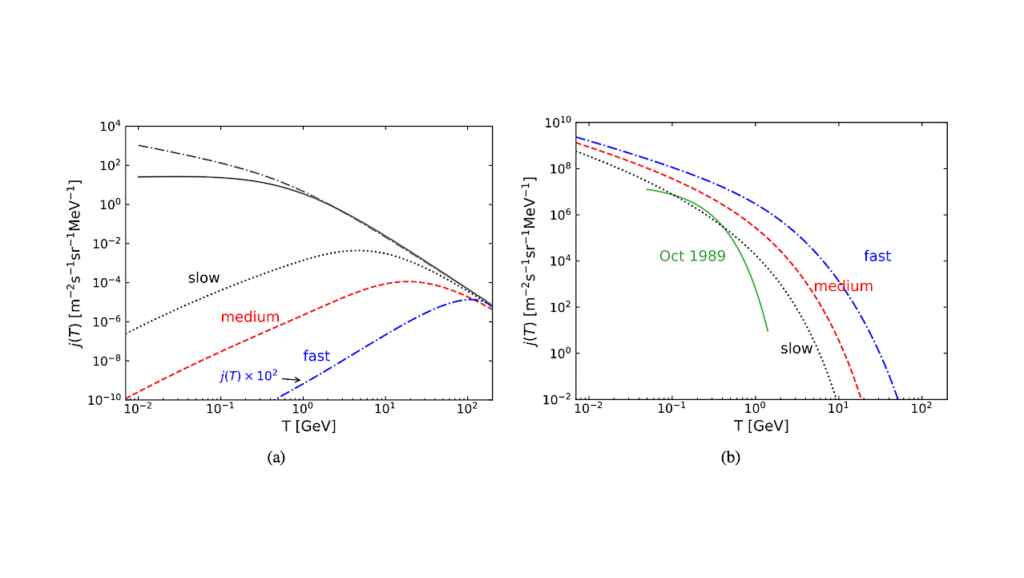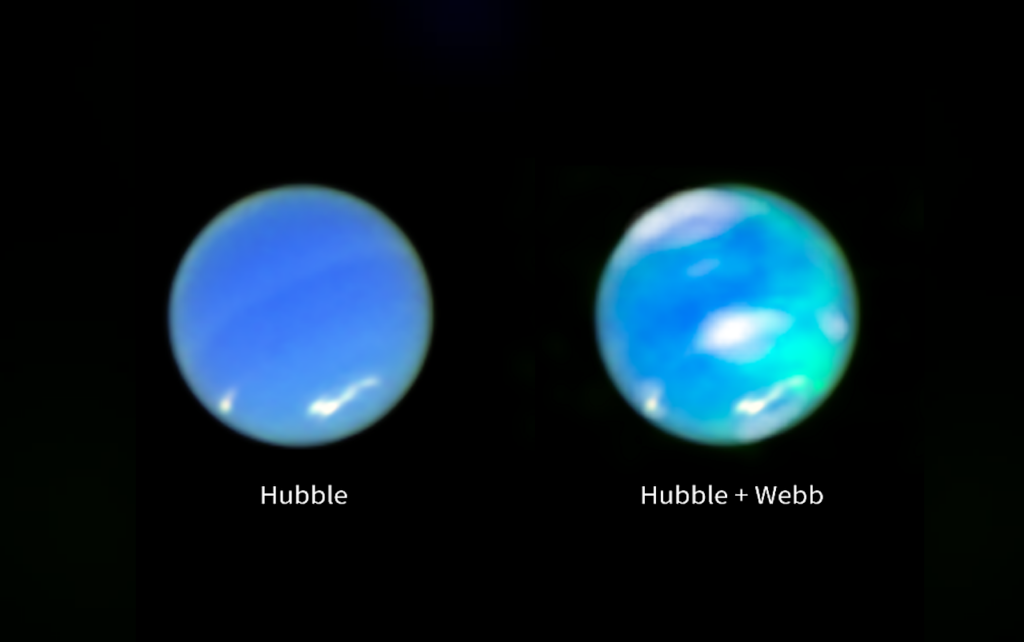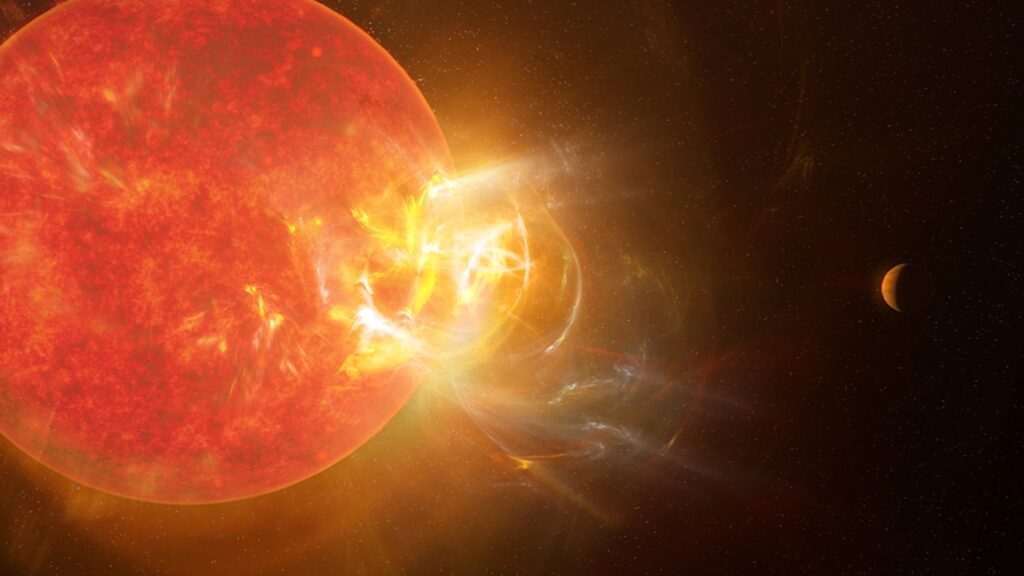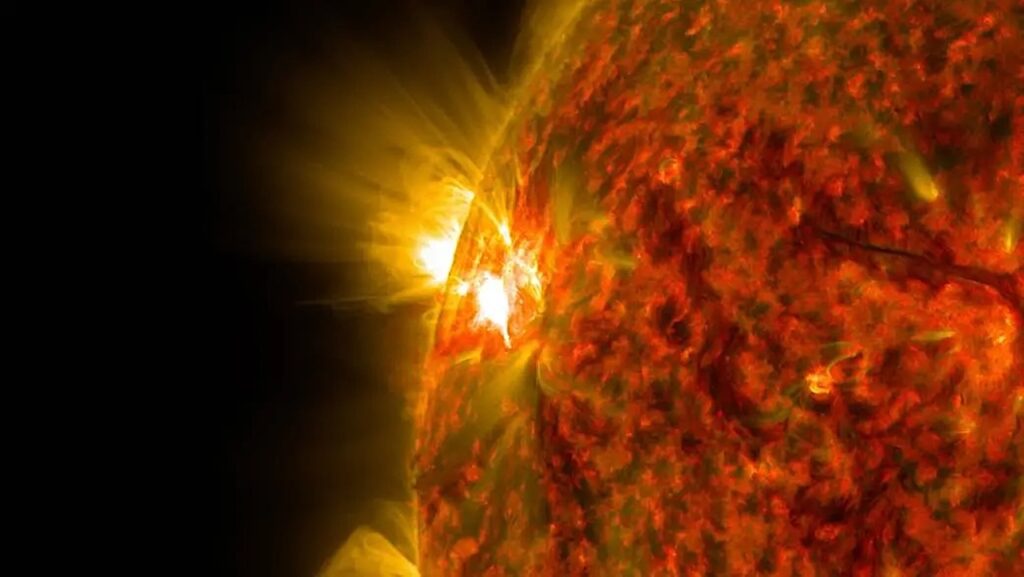Frequency of Coronal Mass Ejection Impacts with Early Terrestrial Planets and Exoplanets Around Active Solar-like Stars

Energetic flares and associated coronal mass ejections (CMEs) from young magnetically active solar-like stars can play a critical role in setting conditions for atmospheric escape as well aspenetration of accelerated particles into their atmospheres that promotes formation of biologically relevant molecules.
We have used the observationally reconstructed magnetic field of the 0.7 Gyr-young Suns twin, k1 Ceti, to study the effects of CME deflections in the magnetic corona of the young Sun and their effects on the impact frequency on the early Venus, Earth and Mars. We find that the coronal magnetic field deflects the CMEs toward the astrospheric current sheet (ACS).
This effect suggests that CMEs tend to propagate within a small cone about the ecliptic plane increasing the impact frequency of CMEs with planetary magnetospheres near this plane to ~ 30 percent or by a factor of 6 as compared to previous estimate by Airapetian et al. 2016. Our model has important implications for the rise of prebiotic chemistry on early terrestrial planets as well as terrestrial type exoplanets around young G-K dwarfs.
Christina Kay, Vladimir S. Airapetian, Theresa Lüftinger
(Submitted on 7 Nov 2019)
Comments: 13 pages, 3 figures, accepted for publication in The Astrophysical Journal Letters
Subjects: Solar and Stellar Astrophysics (astro-ph.SR)
Cite as: arXiv:1911.02701 [astro-ph.SR] (or arXiv:1911.02701v1 [astro-ph.SR] for this version)
Submission history
From: Vladimir Airapetian
[v1] Thu, 7 Nov 2019 01:17:56 UTC (859 KB)
https://arxiv.org/abs/1911.02701
Astrobiology








